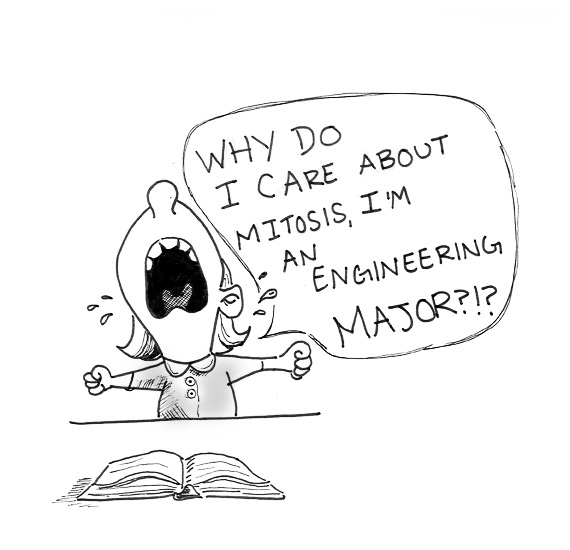Viewpoint: Gen. Ed. Classes – are they helping or are they hurting?
November 26, 2017
Great in theory, bad in execution, general education requirements at the University of Wisconsin La Crosse need some work. With the forty-eight credits demanded for each student to complete while or during the completion of their personal major credits, the forty-eight can seem overwhelming. Being an advocate for diverse learning, I’m glad to have been in the general education classes I was. However, when do they become more of searching for an easy “A” instead of thirsting to learn?
I was lucky enough that many of my general education requirements fulfilled gen. ed. requirements as well as requirements between my two majors and minor, but many other students are not as fortunate. With the increase of competitive dual majors and the intense courses students are taking, adding general education requirements in along with those often is a challenge.
Many categories of the general education requirements require two courses to be completed to have satisfactory met the UW System goals. Ones such as Mathematics, Logical Systems and Modern Languages is a strain for many students because seven credits are needed to finish the category. This requirement is also difficult for students because many students who are not going into a math related career path are forced to take at least one normal mathematics course, and then a logical system course or modern language.
The solution I see is allowing students to have a three to four credit option – pick a mathematics, logic, or a modern language versus requiring the traditional mathematics class. If your major does not require it and you’re going more of a liberal studies route, a semester of math won’t do a student justice who has another knack in life, such as humanities. Being someone in a logical system class, the tools I have learned further help aid me to problem solve in everyday life. This is essentially what any regular mathematics course hopes for you to take from it after you’ve completed it, but why should it matter which one you take?
On the other side of the spectrum, students who are more mathematically and science inclined are expected to take two classes in the “International and Multicultural Studies” and “Arts and Aesthetic Experience” when in reality, only one should be required. It is a wonderful experience to be in a level of higher learning where you can take classes you never would before or let alone thought you could ever enjoy, but the enjoyment dwindles when more than one course is required.
Within “Humanistic Studies” students must take three credits and can pick from literature courses or other humanities such as Ethics and Religion, Political Theory, and etc. Students may look at this eagerly and think that they can take a more political aimed course or ethically focused but learn that although three credits are required, one class MUST be a literature course from the lit. category leaving students who find literature difficult in a rut. They miss out on the other humanities simply because they run out of time and even though they are included under the list of requirements for Humanistic Studies, UWL does not recognize them as the minimum of three credits you need.
In a recent Racquet article by Student Senate Reporter, Allison Steele, she sat in on the student senate meeting where a discussion to reduce the number of general education requirements was heard, “’Instead of requiring students to take forty-eight credits it would potentially be changed to forty-two… The Higher Learning Commission did approve the University’s general education requirements. However, when the committee behind the movement and more people started talking to groups on campus, the conclusion was that the proposal could be improved.’”
There is hope for future students to have more time to focus on their major and take classes that will make them more proficient in their specialty than the current allocated time to do so.
Many majors have credit loads of thirty to forty-five credits, or ten to fifteen classes, being required. With forty-eight credits of general education classes equaling sixteen classes, how are students really getting the higher education they need when they are taking six more classes in areas that they are not getting a degree towards?
Learning about a diverse number of subjects makes more well-rounded student, but it is too much for college students to balance a never-ending list of general education classes and major classes in the time of four years.







